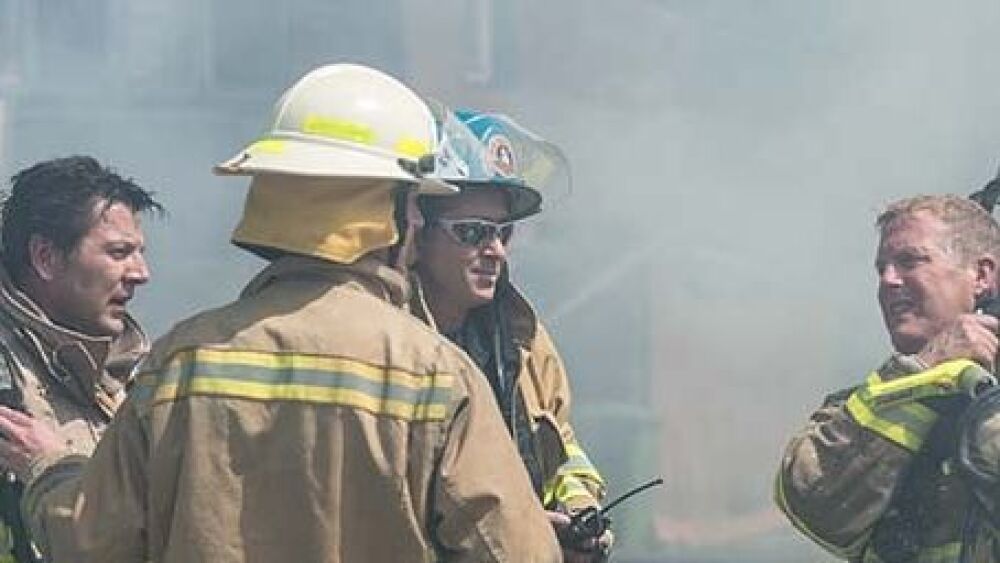I hear it everywhere: “I don’t have enough people!”
Fire chiefs are finding it much more difficult these days to have a workforce to staff apparatus.
A quick Google search reveals a host of news items detailing staffing shortages – too few applicants applying, firefighters out on sick leave or quarantined, or firefighters just resigning as part of “The Great Resignation” to go do something else or work from home.
Volunteer and career alike
Volunteer fire departments, which were already experiencing trouble with recruitment and retention of volunteer firefighters, are experiencing even more difficulty these days.
In 2019, the NFPA published its 2017 U.S. Fire Department Profile report. The report estimated that there were 682,600 volunteer firefighters in the United States in 2017. That is down significantly from the 814,850 and 729,000 volunteer firefighters that the NFPA estimates were active in the U.S. in 2015 and 2016, respectively. The volunteer firefighter numbers for 2016 and 2017 are the lowest recorded levels since the NFPA began the survey in 1983. Add the pandemic into the mix, where older volunteer firefighters were concerned about responding on EMS calls, and it’s easy to see why volunteer fire departments are having even more trouble these days getting anyone to respond.
Some examples of the many fire departments challenged with staffing issues:
- Huntsville (Alabama) Fire and Rescue had to do a special recruitment drive recently following a shortage of applicants.
- Coweta County (Georgia) Fire and Rescue reports 30 vacancies for firefighters, paramedics and EMTs.
- Numerous fire departments in the valley around the Phoenix area report staffing shortages, and in one department, a fire chief took on front-line work to help exhausted firefighters who have been forced to work mandatory shifts.
But it’s not only the smaller or volunteer departments. Baltimore Fire, where three firefighters died in the line of duty recently, reports a 7% vacancy shortage. Other metropolitan departments like Los Angeles, Cincinnati, San Diego and Seminole County, Florida, also report staffing shortages. Fire departments in Portland and Memphis have resorted to recruiting other firefighters under a lateral transfer program.
Why the shortage?
There are several key factors driving these shortages.
First, the younger workforce does not appear to be as interested in jobs related to public safety. When I worked in St. Louis, we’d sometimes see 5,000 people apply when the firefighter job announcement posted. That is no longer the case.
Gen Y (aka millennials, some still in their late-20s) is tech-savvy and gravitate to more technological jobs. They prefer more flexible work schedules and don’t mind working from home. They often seek positions in which they can have a solid work-life balance. They prefer jobs that allow them to spend more time with their family and/or pursue personal goals. In some cases, they may prefer a job with more flexible hours over one that offers higher pay.
Those in Gen Z who are already eligible to work also aspire to technology jobs. Most job applications from Zeds are for companies in the tech industry, followed by business services, finance and retail. IBM, Google, Amazon, Microsoft and Deloitte are the top five companies where Zeds are applying for work.
COVID has also impacted fire departments that were already experiencing staffing shortages. In December 2021, the Cincinnati mayor declared a staffing emergency among the fire department after a large number of firefighters tested positive for COVID.
During the peak of the omicron virus, fire departments were shutting down apparatus because so many firefighters were sick with the virus. On one day, the Houston Fire Department shut down 18 ladder companies and one engine company. Other departments canceled vacations in an effort to keep companies staffed.
Staffing shortages have also resulted from baby boomer-age firefighters at or nearing retirement age. And Gen Xers are looking to retire as soon as they are eligible – often to try their hand at something new.
We now find ourselves burning out our current workforce because of application shortages and firefighters who are out sick with COVID. Firefighters, in some cases, have been forced to work multiple shifts in a row to provide coverage. While the overtime money may be good, the long-term effect can be damaging when trying to retain a firefighter.
What chiefs can do
If you are a fire chief, you need to focus in several areas.
First, focus on retention. During the recent omicron spike, my department experienced about a 10% sick rate of those infected by COVID at any given time. Add those out on disabilities and other issues, and you have a staffing shortage.
Immediate steps were taken to keep the workforce in place, including standing down all training, where someone could get hurt, canceling outside classes where a firefighter would have to be replaced by someone on overtime, plus other measures. Addressing retention is not only a staffing issues, but it is a safety issue. Working multiple shifts, coupled with sleep deprivation, can have a calamitous effect.
It’s also important to support your volunteer firefighters however possible so they don’t find themselves forced to leave the department. Some innovative ways to help members:
- Use volunteers to do childcare while firefighters are training or responding to an incident.
- Develop some type of pay or benefits incentives, including pay per performance.
- Find ways to recognize your volunteer firefighters other than an annual ceremony.
For career departments, look at your recruitment efforts. Making a job announcement and expecting people to flock to your Human Resource department is dreaming these days. You must be innovative in your recruiting efforts.
My department’s last two recruiting cycles included a flashy 45-second video posted to Facebook, then boosted while targeting certain age groups in certain geographic areas so that the video showed up in their news feed. Both cycles, which were two years apart, resulted in over 30,000 views and over 200 people applying each time to be a Champaign firefighter.
Don’t forget, money and benefits are still a motivator. If you are not paying your people well, along with decent benefits, your community needs to reevaluate efforts not only as a recruitment tool, but a retention tool. I am well aware of firefighters who leave one department after getting experience to go to a higher paying department.
Creative and proactive
Plenty has been written and is available when it comes to recruiting and retaining career and volunteer firefighters. The bottom line: The standard model no longer works. Successful career and volunteer departments have good leadership that thinks outside the box and markets aggressively when recruiting and takes innovative steps to retention.
The staffing shortages are not expected to end anytime soon and may even escalate as more baby boomers and Gen Xers leave the workforce, and we find ourselves relying on the younger members to step up to assume public safety roles. Only those departments that think outside the box and are proactive with recruiting and retention will succeed.













